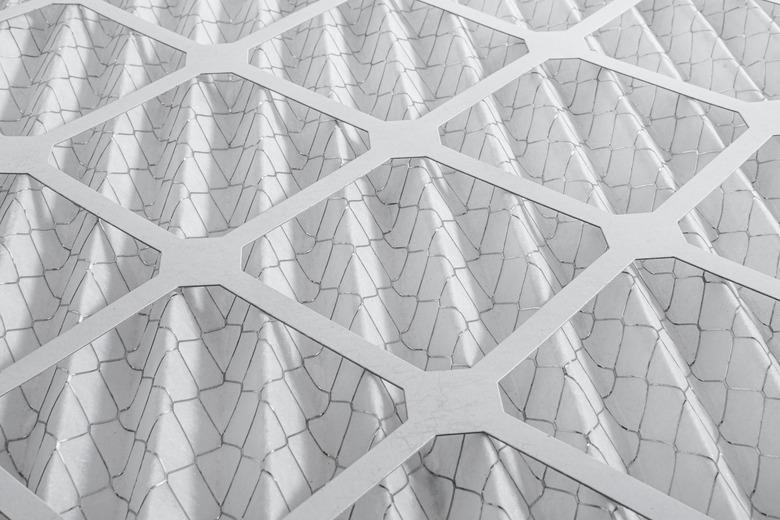How To Replace The Filter In A Rheem Air Handler Unit
Changing HVAC filters is one of the simplest and least demanding home improvement tasks you can accomplish, and it makes a huge difference to the performance of your system. The air filter in your Rheem air handler is conveniently located behind a removable panel, so you just have to open the panel, remove the old filter, install the new one, and close the door. Of course, it's important to use the right filter, but as long as you match the new one to the old one to make sure they're the same size, you can't go wrong on that account.
Your system may even have a washable air filter, in which case you don't even need to replace it. You just remove the old filter, wash it, let it dry, and put it back. Either way, you're looking at a time expenditure of five to 10 minutes, which means if you happen to be watching TV, you could do it during a commercial break. Considering how important it is for the health of your central air system, it's a much better investment of time than a trip to the refrigerator.
Why You Need to Replace the Air Filter
The air handler, which is typically located in the basement or a dedicated furnace room, is the housing for the blower that circulates conditioned air through the ductwork. The air that circulates gets sucked into the air handler from the immediate surroundings, so if that air is full of particulate matter, that's what you'd be breathing in the house if the air filter wasn't there. That's one reason the filter needs to be clean, and there's another.
The blower needs a ready supply of ambient air to create enough air pressure to fill the ducts, and if you have a big house, there are lots of ducts to fill. If a dirty filter is impeding airflow, there may not be enough air to fill the ducts, and all the heat or cold air produced by your central air system goes to waste. Poor air circulation can also cause problems like iced-over cooling coils or an overheated furnace, and if the problem gets bad enough, your system may shut down. At the very least, the system works harder than it has to, and your energy bills go up while the level of comfort in your house goes down.
Where Is the Air Filter Located?
If you don't know where your air handler is located, it's pretty easy to find. It's in the same room as your furnace, heat pump, or central air indoor unit, and these HVAC components are usually housed inside it. A Rheem air handler is a rectangular gray metal box from 4 to 5 feet tall and from 3 to 4 feet wide. It may be sitting on the ground, or it may be mounted on a pedestal, which is the preferred method of installation because it allows for ample air space underneath the housing. That's important if intake air comes through the bottom of the housing, which is common with Rheem air handlers.
Once you've located the air handler, look for a small rectangular panel on the front (just under the Rheem logo). It's held in place by a pair of clips or nuts that you can loosen and remove by hand. Once you do that and remove the panel, you have access to the filter. You might not be able to see it if it's tucked tightly against the bottom of the air handler, but you'll be able to see the front edge, and that's all you need to see.
How to Replace the Air Filter
The air filter isn't attached to anything, so you can grab the front edge and slide it out. It's supported by tracks on either side, which is why the new filter has to be the same size. If it's too small, it will fall out, and if it's too big, you'll have to bend it to get it to fit, and it won't work properly. If this is your first time changing the filter, you'll want to read the dimensions imprinted on the existing one and buy a replacement with the same dimensions.
Turn off the system by using the switch or flipping off the breaker before replacing the filter because you don't want the blower to switch on while you have the filter out. Slide in the new filter with the arrow imprinted on the side pointing in the direction of the air handler (up) and don't forget to turn the system back on. You should do this once a month to keep your system in top running order.
